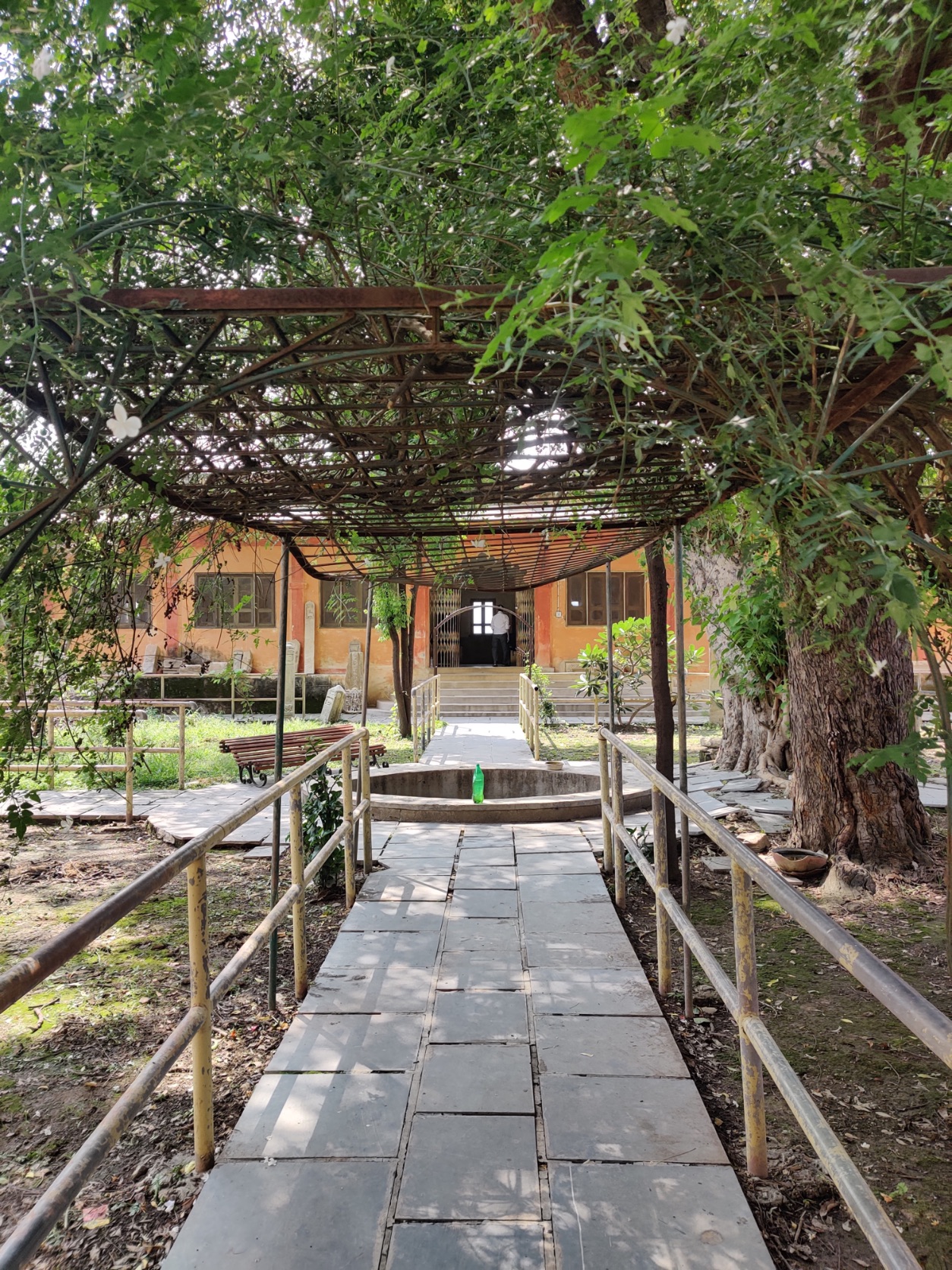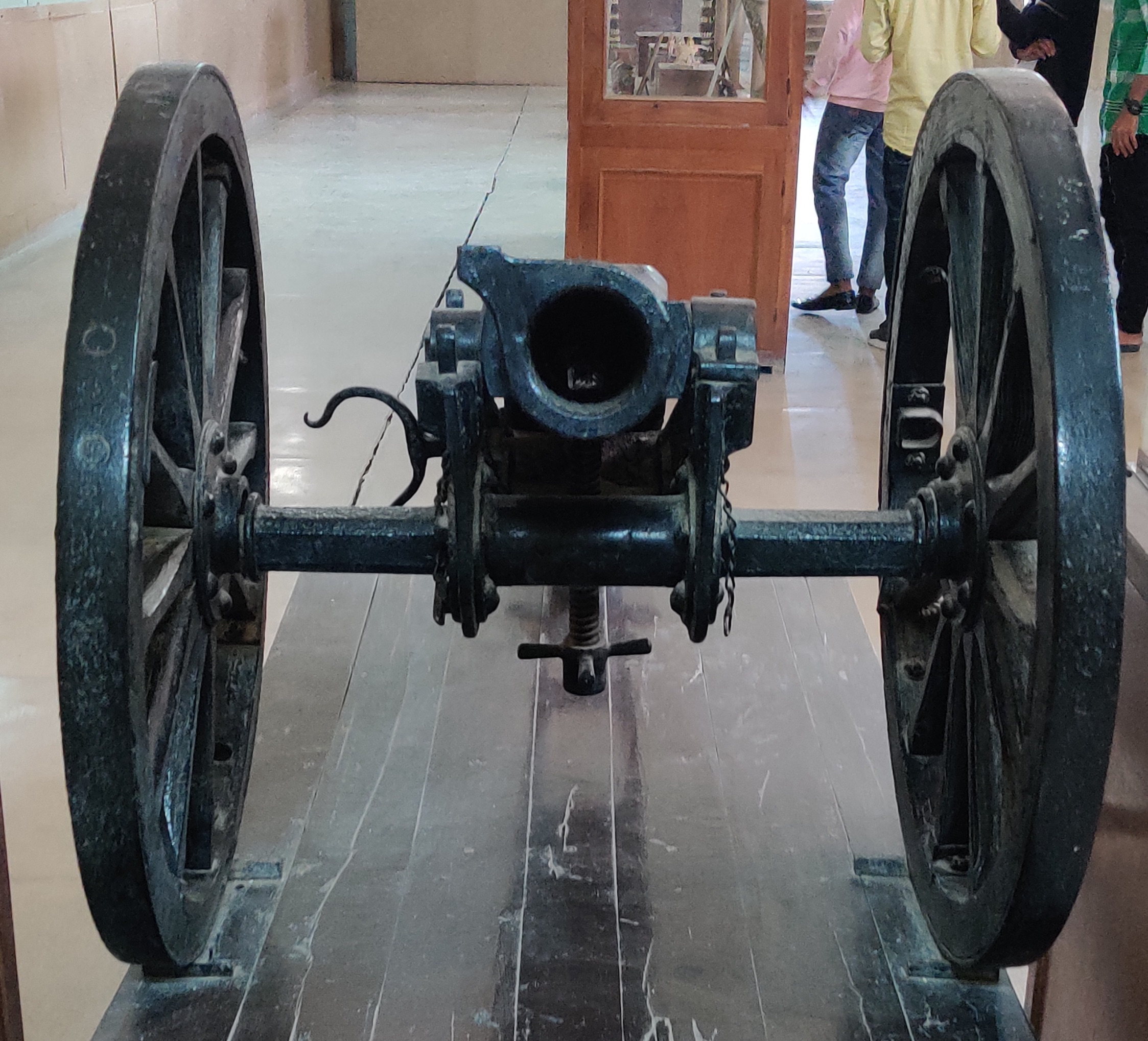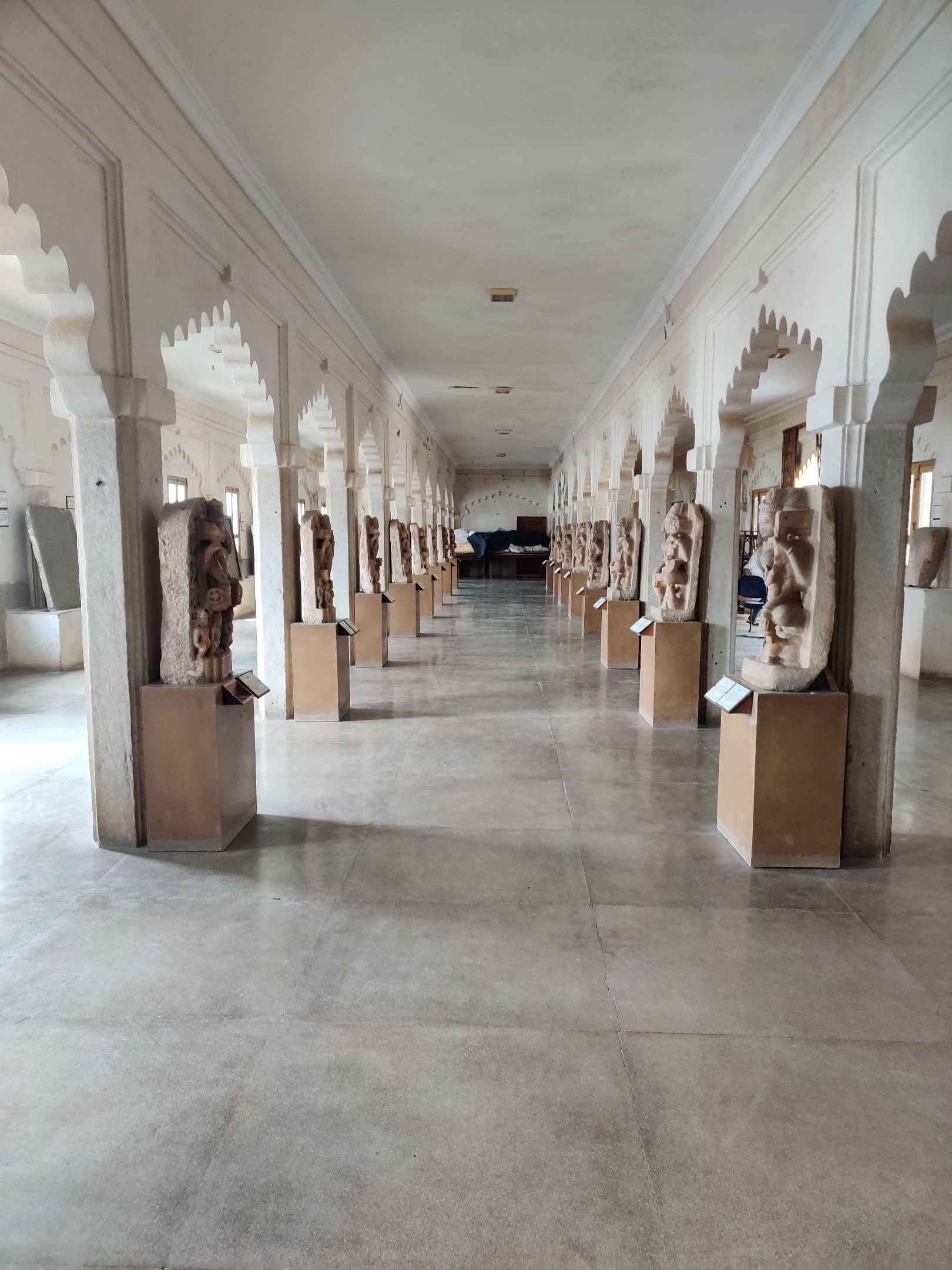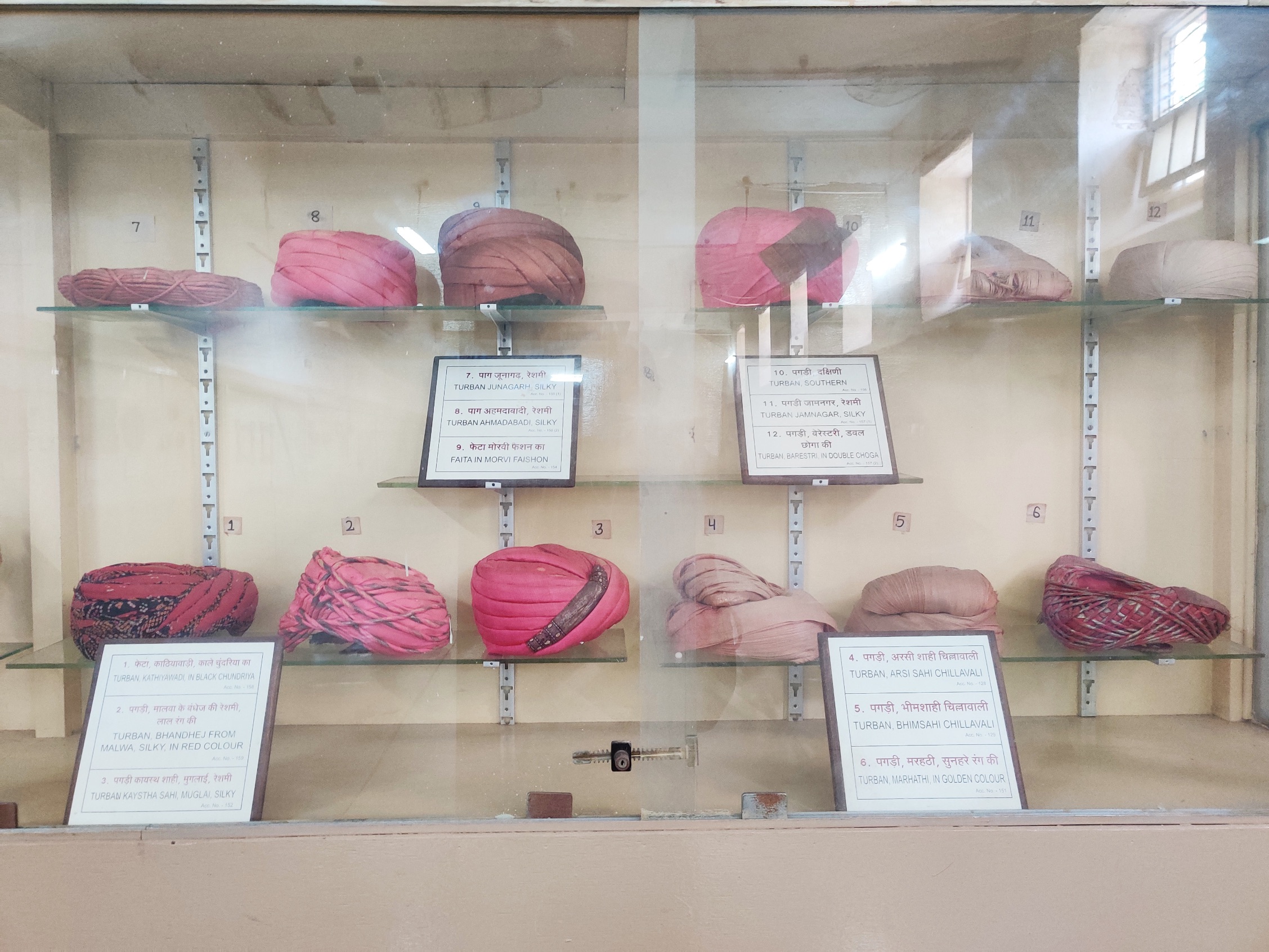In celebration of Queen Victoria’s Golden Jubilee in 1887, a new building in was constructed under the supervision of Maharana Fateh Singh (r. 1884-1930) at the Sajjan Niwas Garden, popularly known as Gulab Bagh in Udaipur. The artefacts collected during the reign of Maharana Sajjan Singh of Mewar (r. 1874- 1884) were displayed in this building which was opened to the public in 1890 as the Victoria Hall Museum. In 1968, the premises were shifted to the Karan Vilas area inside the City Palace and the museum, one of the oldest in Rajasthan, is now known as The Government Museum of Udaipur or the Pratap Museum.
The museum displays a widespread collection of excavated items, inscriptions, sculptures, paintings and handicrafts across galleries such as The Children’s Gallery, The Handicrafts Gallery, The Sculpture Gallery, etc. The first gallery of the museum, the Children’s Gallery is the natural history section which displays stuffed models of animals such as tigers, kangaroos, monkey, musk deer, etc. The Handicraft Gallery is a cultural repository of traditional garments such as sarees, handkerchiefs, different styles of turbans as well as household items such as ivory bowls, chess sets, perfume containers etc. A highlight of this display is the turban belonging to Prince Khurram, the future Mughal emperor Shah Jahan which was exchanged with the turban of Maharana Karansingh of Mewar. The other end of the gallery displays arms and armoury from the Mewar region.
The Sculpture Gallery displays figurines such as Indriya Matrika from Lagat (5th - 6th century AD); Kumari Matrika from Kumbhalgam; Shiva's head from Kalyanpur and lain Kuber from Bansi (8th century AD). It is complemented with inscriptions such as the Nandshala inscription excavated from Bhilwara and the Ghosundi inscription from Chittorgarh. The inscriptions exhibited range from those of 2nd century BC to 17th century AD. The museum also displays specimens of plastic art from Mewar. The last gallery of the museum houses the nine thousand miniature paintings of Mewar school from the period of Maharana Lagat Singh (1628 - 1652 AD) to Maharana Swaroop Singh (1842 - 1861 AD) – the largest collection of Mewar art in the world. The paintings illustrate epics such as Mahabharata, Prithviraj Raso and Geet Govind.
This content has been created as part of a project partnered with Royal Rajasthan Foundation, the social impact arm of Rajasthan Royals, to document the cultural heritage of the state of Rajasthan.




Indian Student: 5 Rupees
Foreigner Tourist: 50 Rupees
Foreigner Student: 25 Rupees
Entry is free on 30th March: Rajasthan Diwas, 18th April: World Heritage Day, 18th May: World Museum Day and 27th September: World Tourism Day
2. A highlight of the display at the Handicraft Gallery of the museum is the turban belonging to Prince Khurram, the future Mughal emperor Shah Jahan which was exchanged with the turban of Maharana Karansingh of Mewar.
3. The museum houses the nine thousand miniature paintings of Mewar school from the period of Maharana Lagat Singh (1628 - 1652 AD) to Maharana Swaroop Singh (1842 - 1861 AD) – the largest collection of Mewar art in the world.
